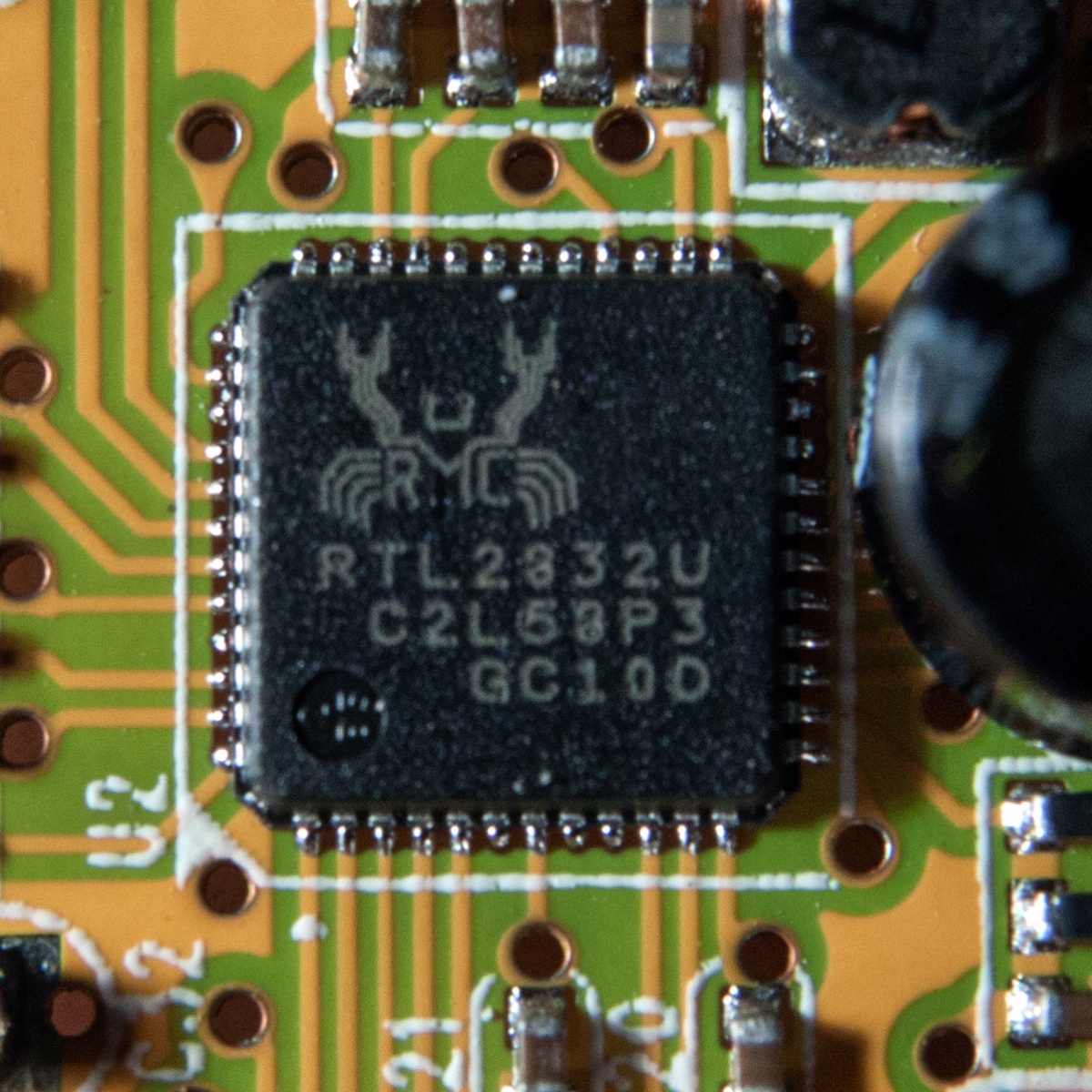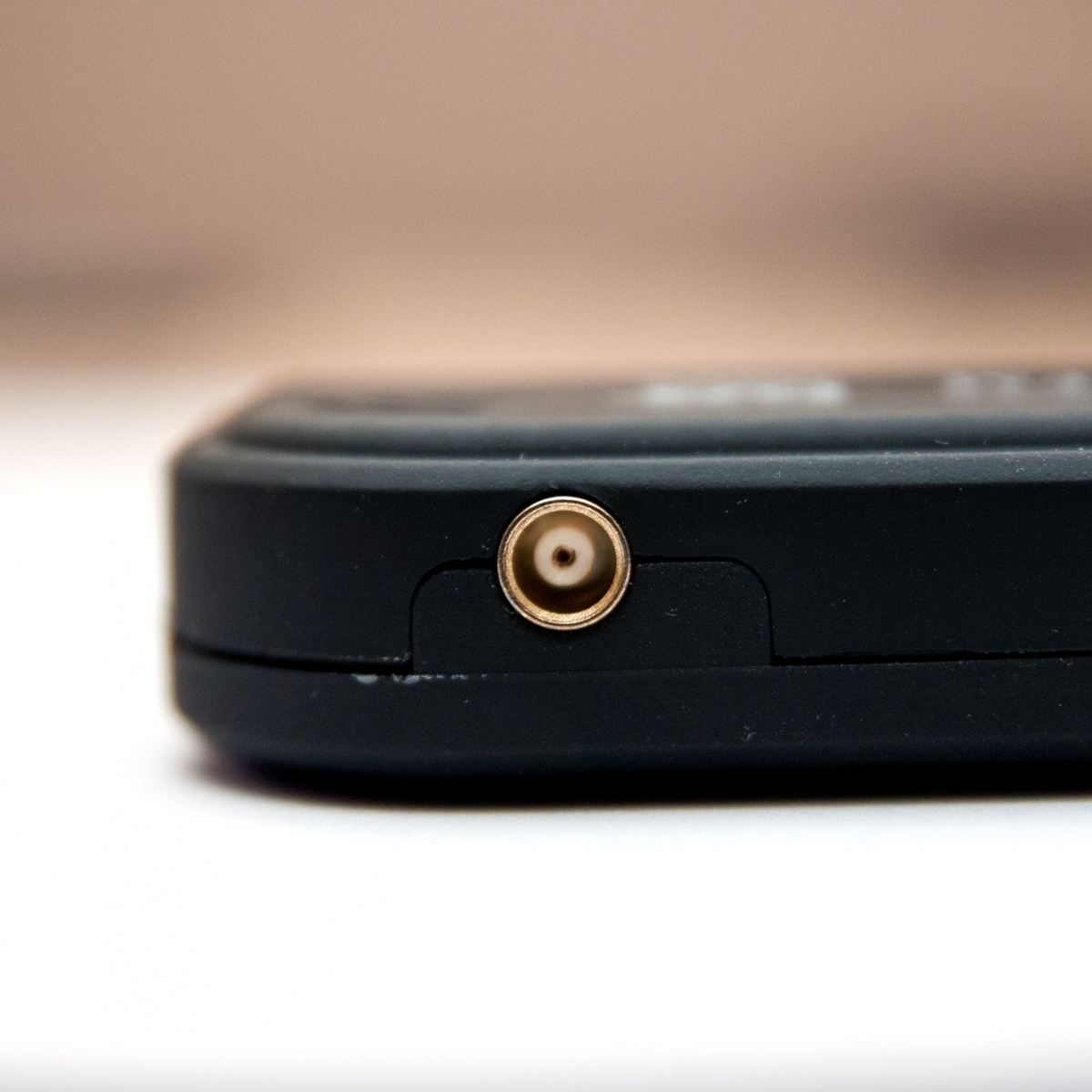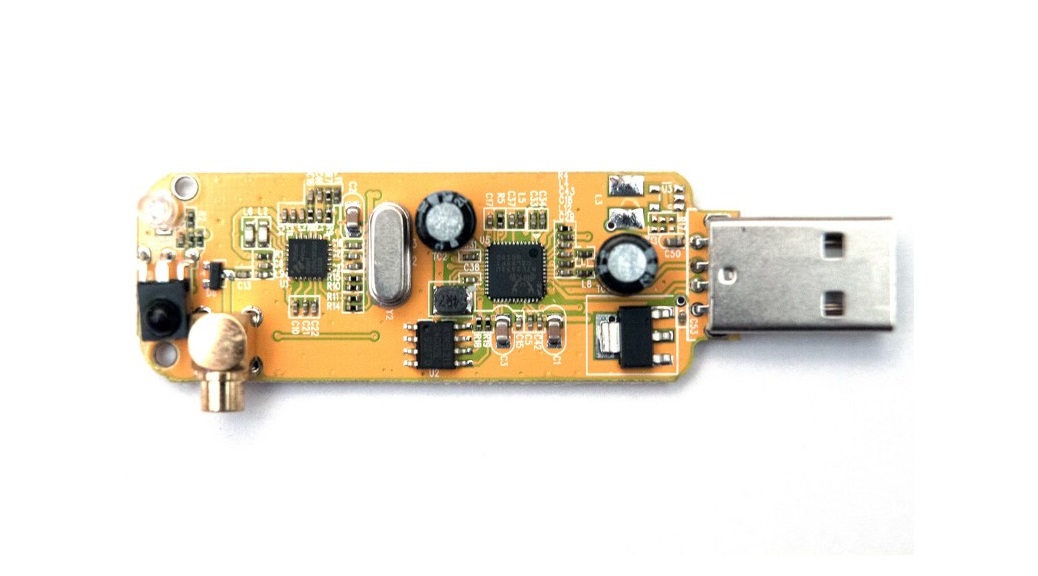This article appeared in the The Lake Erie Amateur Radio Association newsletter The Spirit of ’76 and ’88 August 2014 edition and The Wood County Amateur Radio Club newsletter CQ Chatter September 2014 edition.
Read the rest of the series in the Dongle Bits articles category.
Before we begin talking about the RTL-SDR dongle as promised, some big news broke. The Raspberry Pi Foundation released the Raspberry Pi Model B+. They point out this is not a “Raspberry Pi 2” but an evolution of the model B board. Price is the same at $35. Key improvements are:
- More GPIO: 40 pins with the first 26 pins the same as the Model B.
- More USB: 4 USB 2.0 ports with better hotswap and overcurrent behavior.
- Micro SD: SD card socket has been replaced with a micro SD version.
- Lower power consumption: Reduced power consumption by 0.5W to 1W.
- Better audio: The audio circuit incorporates a dedicated low-noise power supply.
- Neater form factor: Aligned the USB connectors with the board edge, moved composite video onto the 3.5mm jack, and added four squarely-placed mounting holes.

For more details, diagrams, and videos, please visit Introducing Raspberry Pi Model B+. Because of the new configuration layout many accessories for the B board will not work with the B+ board.
Now, RTL-SDRs: RTL-SDR is a term used describe a very cheap software defined radio. Other names for this device are: RTL2832U, DVB-T SDR, or “$20 Software Defined Radio.” RTL refers to Realtek Semiconductor Corp most widely known for their computer IC network controllers, card readers, and very popular High Definition Audio codec used in many laptop and desktop computers.
SDR refers to “software defined radio.” Typically radio components like mixers, filters, amplifiers, modulators/demodulators, and detectors are implemented in hardware level components. In SDRs these components are implemented by way of software running on a PC or embedded system. The most widely known SDR in ham radio is FlexRadio.

The RTL-SDR is a DVB-T TV tuner dongle based on the RTL2832U chipset. DVB-T stands for Digital Video Broadcasting – Terrestrial used in the eastern hemisphere (Europe, Asia, Africa, and Australia) as their over-the-air broadcast standard. In contrast, North America uses ATSC (Advanced Television Systems Committee) standard for digital television transmission over-the-air, cable, and satellite networks (sources: DVB-T and ATSC).
Antti Palosaari, Eric Fry, and Osmocom were hackers playing around with these receivers and found the signal data could be accessed directly. This allowed a cheap DVB-T TV tuner to be converted into a wideband software defined radio via a new software driver and used as a computer based radio scanner. Add in software packages to expand the capability and you have a system that would cost hundreds or even thousands of dollars.

The current popular dongle is the NooElec NESDR Mini SDR & DVB-T USB Stick (R820T). It comes with an antenna that only works well for very strong signals. Yes, it does come with a Remote but you don’t need it for SDR. They guarantee the NESDR will have an electrostatic discharge diode (ESD) in their dongles. This is useful when handling the dongle or traveling where the possibility of frying it is greater. However, as I found out, if you drop one of them upon returning from Dayton you’re better off getting another because it just won’t work the same!
Let’s dive into some specifics:
-

RTL2832U Chipset close-up Frequency range: depends on the device and chipsets used. The NooElec NESDR has a receive range of 24 – 1766 MHz. The previous Elonics E4000 hotness covered 52 – 2200 MHz. However, that company went out of business making the dongle rare and more expensive.
- Sample rate: maximum theoretical sample rate is 3.2 MS/s (mega samples per second). The optimal sample rate (without any dropped samples) is 2.4 MS/s.
- Analog-to-digital conversion resolution: 8 bits.
- Input impedance: 75 Ohms. The mismatch loss when using 50 Ohm cabling is minimal.
- Connector type: most use an MCX connector. The E4000 uses a

MCX Connector PAL connector.
These $20 dongles only receive. Other dongles offer better performance but come at a higher price. The FunCube Dongle is an example of this. HackRF (10 – 6000 MHz) and BladeRF (300 – 3800 MHz) are SDR radios that will transmit over their given frequency range. That’s right, wideband transmit! These are even more expensive at $300 – $650 (sources: About RTL-SDR and Buy RTL-SDR Dongles).
What about HF? The dongles themselves don’t cover HF. There are two options for reception: use an upconverter to receive the frequency and convert it up to a frequency the RTL-SDR dongle can receive. Make a hardware modification to allow “direct sampling mode.” HF upconverters are anywhere from $50 – $100 (cheaper if you build your own) and offer better performance over the hardware mod. KF7LZE has a round-up of HF upconverters.
This quickstart guide shows how easy it is to setup and start receiving signals. Windows users will probably start out with SDRsharp (also written SDR#) to receive signals. Linux users have a couple options; GNURadio being the best though it is unwieldy because you build out the SDR from scratch.
These make it easy to receive FM broadcast (WFM), NOAA weather radio, amateur radio, or public service frequencies that are still analog. I will show uses and applications of these SDR receivers including a reason you might want to get two (or more) dongles. Hint: it’s not to replace one after Dayton!
